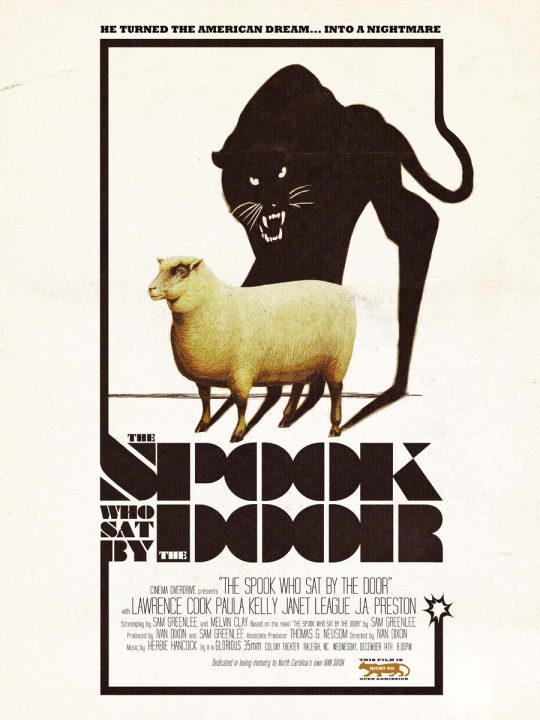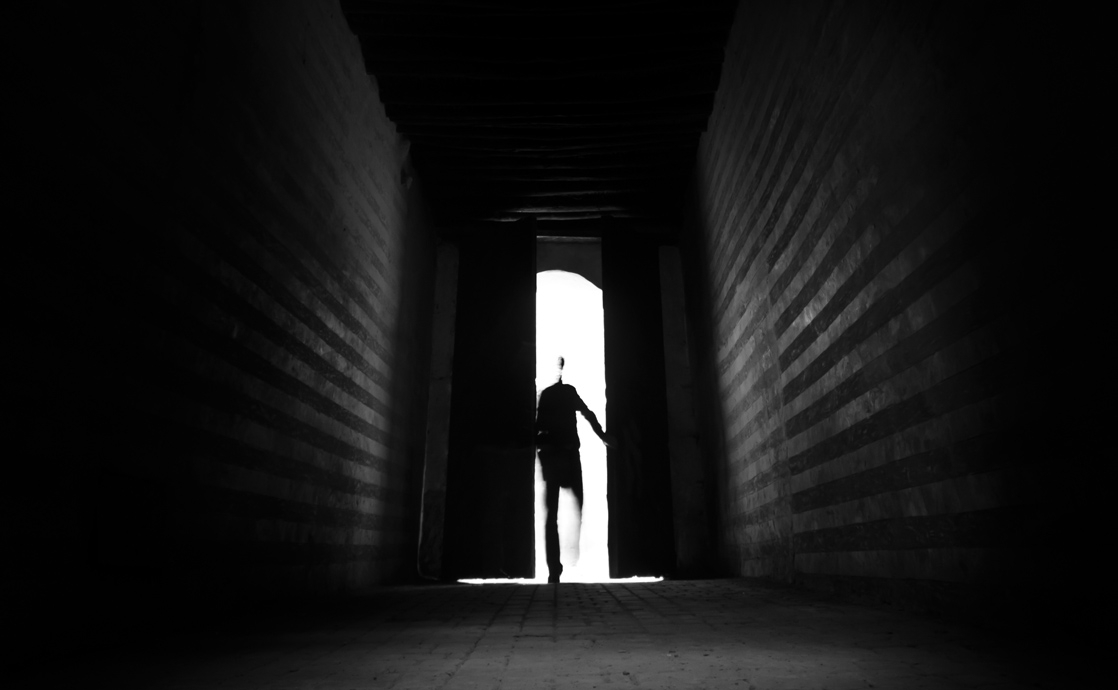The views expressed in our content reflect individual perspectives and do not represent the authoritative views of the Baha'i Faith.
The classic 1973 film “The Spook Who Sat by the Door,” based on the novel by writer Sam Greenlee, tells the fictional story of Dan Freeman, the first Black CIA officer. The film, directed by the actor and filmmaker Ivan Dixon, follows Freeman through his training in the Central Intelligence Agency, his subsequent assignment as a field officer, and his eventual role as the leader of a paramilitary group engaged in armed resistance against institutionalized racism.

Shot in the wake of the tumultuous decade of the 1960s and the gains achieved by the civil rights movement, the film serves as a conceptual pivot around which the philosophy of nonviolent direct action shifted towards the more militant polemics of Black separatist groups.
The thematic elements of the film reflected the growing frustration and seething resentment within Black and brown communities for the slow pace of progress towards racial justice. The lead character, Freeman, employs the subversive guerilla tactics he learned as a CIA operative to fight the very power structure he once served — tactics grounded in deception, evasion, and invisibility. In a telling scene, Freeman, speaking to a gathering of new recruits, excavates the racist trope of the “passive Black servant” to convey a powerful lesson about the benefits of an “active invisibility” that is keenly perceptive and searingly insightful.
“Remember, a Black man with a mop, tray or broom can go anywhere in this country, and a smiling Black man is invisible,” he says.
Freeman goes on to reveal how this invisibility —this erasure —can become an effective mechanism for resistance and liberation. In a few short lines the writer, Sam Greenlee, brilliantly recasts the “deceptive” image of the “docile, impassive and compliant” Black domestic worker into one who is empowered by a cultivated sense of heightened observation that serves as a basis for developing methodologies for survival historically linked to how well you know the ways of those who are invested in systems of white supremacy and how little they know of you.
This power of perception sharpened necessarily by the merciless stones of racism, becomes a conceptual model for the Baha’i-inspired concept which links people of African descent with the physical and spiritual vision of the pupil of the eye.
The following statement, originally articulated in 1921 by Abdul-Baha, the son of Baha’u’llah, the prophet and founder of the Baha’i Faith, after seeing a photograph of Robert Turner, the first African American Baha’i, decouples the concept of “Blackness” from the negative associations meant to divest it of its brilliance. Instead, Abdu’l-Baha hinges Blackness to the scintillating power of spiritual light and insight:
O thou who art pure in heart, sanctified in spirit, peerless in character, beauteous in face! Thy photograph hath been received revealing thy physical frame in the utmost grace and the best appearance. Thou art dark in countenance and bright in character. Thou art like unto the pupil of the eye which is dark in colour, yet it is the fount of light and the revealer of the contingent world.
Abdul-Baha’s penetrating words conveyed during the early years of the 20th century predate the Black power movement and Greenlee’s controversial text by more than half a century and the civil rights movement by four decades. When viewed within the historical period in which these revolutionary sentiments were expressed, and the divine nature of their origin, they constitute the blunt force of a hammer strike rousing a slumbering society, ignorant of the inherent nobility and dignity of its Black citizens — a blow that sends echoes through eternity.
The term “spook” has a number of associative meanings that provide additional context, which helps to frame a deeper understanding of the concept of “the pupil of the eye”. Among these are a ghost, or spectre; a spy or undercover agent; a derogatory way to refer to Black people by conflating their skin color, particularly at night, with the haunting, dark visage of a ghost. Inherent within all of these descriptions is the condition of invisibility that facilitates the practice of ‘active’ observation. The “spook” in the film is a ghost, a spy, and in the case of the lead protagonist Dan Freeman, an institutional “house negro” viewed as compliant and non-threatening.
The irony, of course, is that the “spook” is always watching and learning about the environment they occupy, studying its contradictions, its fault lines and fissures, compiling the information necessary to accurately perceive the nature of their surroundings. The blindness of racism renders such individuals as irrelevant, unworthy of thoughtful consideration. Thus, the larger society has, historically, remained ignorant of the inner life of people of African descent while the Black community, facing the daily onslaught of a series of existential threats to their mental, physical, and spiritual well-being, has cultivated the penetrating vision essential to understanding the structural ills that blight our society.
This keen sense of perception —both physical and spiritual —associated with the faculties of the pupil, the mechanism through which light enters the eye, is an indispensable element of the restorative medicine necessary to cure humanity of the disease of racism.
From the Baha’i perspective, the violent insurgency that eventually erupts during the course of the film is incompatible with the teachings of Baha’u’llah. He wrote:
Let none contend with another, and let no soul slay another … What! Would ye kill him whom God hath quickened, whom He hath endowed with spirit through a breath from Him? Grievous then would be your trespass before His throne! Fear God, and lift not the hand of injustice and oppression to destroy what He hath Himself raised up…
But, the power of perception, at the heart of the protagonist’s astute analysis of the conditions that frame his existence, echoes the fundamental Baha’i teaching that “truthfulness is the foundation of all human virtues.”
When the spiritual capacity of vision is informed by the transcendent teachings of God’s revelation, the all-compelling power of His creative love supplants bullets and Molotov cocktails, batons, and tear gas. Such a force, descending from the divine empyrean, has no equal in any weapon ever conceived by man. It can humble nations, subdue vengeful hearts, and move an objectified and dehumanized people to the front lines of spiritual transformation all without raising a finger to harm another soul. As the Universal House of Justice, the supreme governing body of the Baha’is of the world, so beautifully stated in a recent letter:
Ultimately, the power to transform the world is effected by love, love originating from the relationship with the divine, love ablaze among members of a community, love extended without restriction to every human being. This divine love, ignited by the word of God, is disseminated by enkindled souls through intimate conversations that create new susceptibilities in human hearts, open minds to moral persuasion, and loosen the hold of biased norms and societal systems… You are channels of this divine love; let it flow through you to all who cross your path.
You May Also Like
Comments

















Thank you for writing such a beautiful article, the way your have interwoven the Baha'i spiritual teachings with pop culture is really fantastic and inspiring and so seamless. It really helps people to see the relevance of the spiritual teachings of the Baha'i Faith with our current culture. We need many more articles like this, please keep them coming, your writing is beautiful!!!